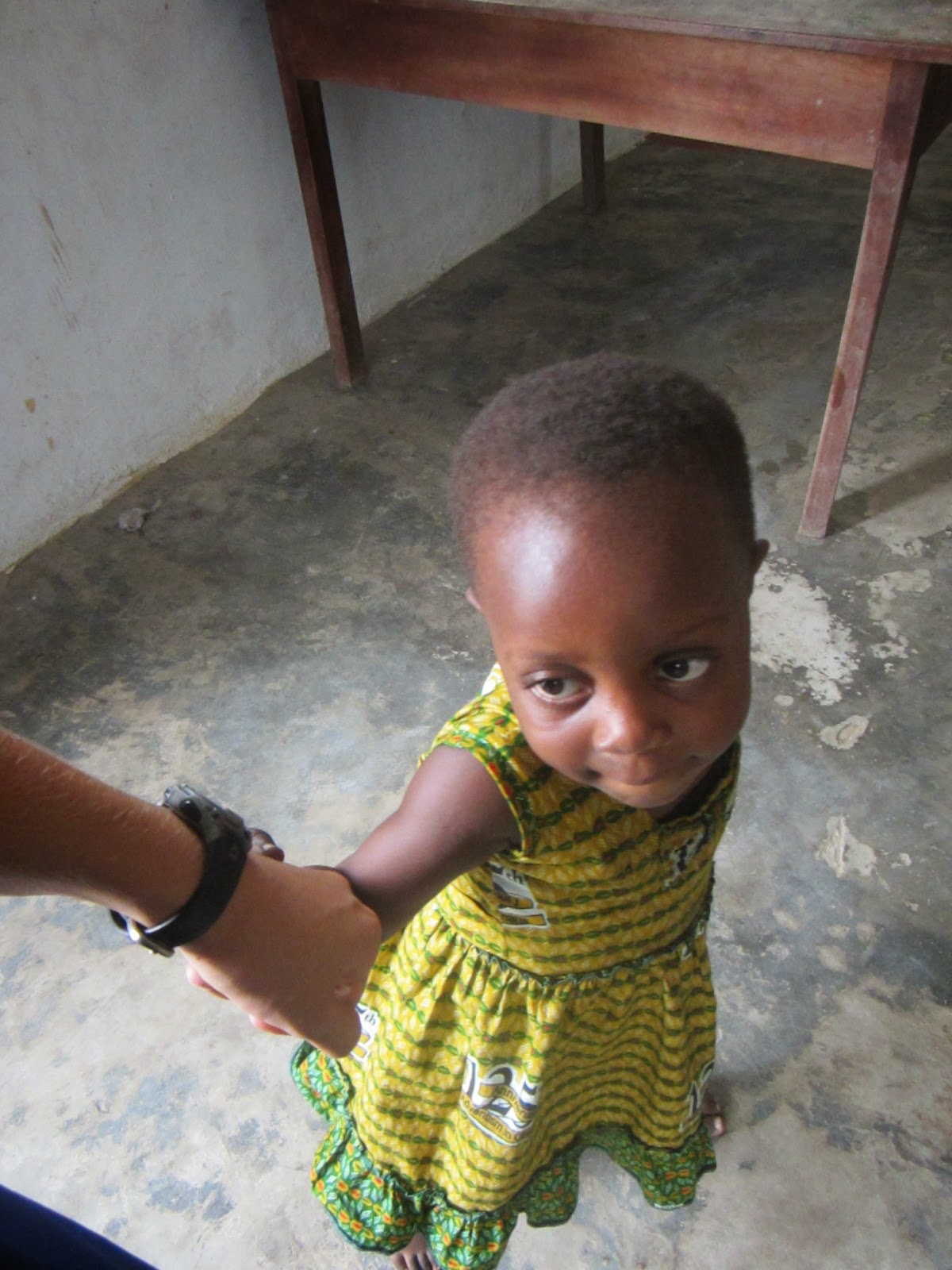April 15
Point Hope
Over Christmas break, Monica was listening to Delilah and
heard her speak about the organization Point Hope that she founded in Ghana.
Turns out it is just 5 miles away from us. We decided to adventure today and
check it out.
Unannounced
we showed up at the office building, unsure of what to expect. Thankfully, a
man was free to explain to us more about the organization.
1)
Founded 10 years ago by Delilah, in Budumburan
Liberian refugee camp. A refugee contacted Delilah through the internet, told
her story, explained the living conditions, and Delilah came to help. She
wanted to improve the poor living conditions with a special focus for the
children.
2)
Point Hope built 2 water towers to provide free
clean water to the refugees. This water has reduced water-born diseases, and
provides 38 Liters to each person every day.
3)
The health and nutrition partners up with St.
Gregory’s Catholic Hospital to provide medical services and equipment. They
take a particular interest in children, newborn infants, and expecting mothers.
We saw the clinic and weighing station of the babies, and met another American
who was volunteering there. We were even able to sit in a counseling session
for 4 brand-new mothers and their 3 –day old babies. They learned how to
provide protection from malaria, what to do if their babies fell sick, and how
to keep them well-nourished. He explained to us about the problem of
malnourished children at the camp hospital due to illness or poor feeding. He
showed us the nutrition bars they give to malnourished kids, and a picture of a
severe case of malnourishment that brought tears to my eyes. Another service
they provide is baby formula for children of HIV positive mothers.
4)
Education- they have a nursery Kindergarten (KG)
school that we visited. They also provide additional assistance to those older
than KG age that attend other schools. While the children are at school, the
mothers can take classes that teach cooking, sewing, farming, baking, tie
dying, beading, and making soap, giving them a service to find a job. When we
opened the gate to the school, about 20 little boys and girls greeted us warmly
and enthusiastically. They ran up and help our hands, wrapped themselves around
our legs, and laughed and laughed with us. The KG class performed songs and
dances for us which was priceless. The littlest ones, who associate all whites
with Delilah, jumped up and down shouting “MAMA DELILAH! MAMA DELILAH!” Never
in my life did I expect to be confused for Delilah of night-time radio.
We met a fellow American from Wyoming, completing his second
round of a two-year program through a Catholic organization. He assists in the
special education class. When we visited their class my heart melted. We
haven’t seen many kids that are handicapped around here, there are none in our
school so it was heart-warming to see these beautiful children learning in
school. They were exuberant with joy when they saw us. Their teacher rushed
over to us and excitedly showed us the exam they were all preparing for:
writing the alphabet. It was precious. They even blew us kisses when we left.
The supervisor at Point Hope handed us pamphlets which
describe even more work being done by this organization. Agriculture, poultry
farms, fish farms, gardens, and building a model village are all sponsored by
Point Hope. Kudos.
An excerpt from the Point Hope Annual Report:
“Point Hope. A Voice for Forgotten Children.”
Who is a forgotten child?
A forgotten child
goes to sleep each night without having enough of something:
Food, love, security,
attention, medical care, and warmth.
A forgotten child
goes to sleep each night without having what they need:
A home… a forever
family… a bed… a prayer said for them… a good night kiss from someone who loves
them.
A forgotten child
gets up every morning:
Unsure of where they
will go to sleep that night… Hungry. Thirsty. Unable to afford the expense of
school… Putting on the same clothes.. Not knowing who is going to care for
them.








